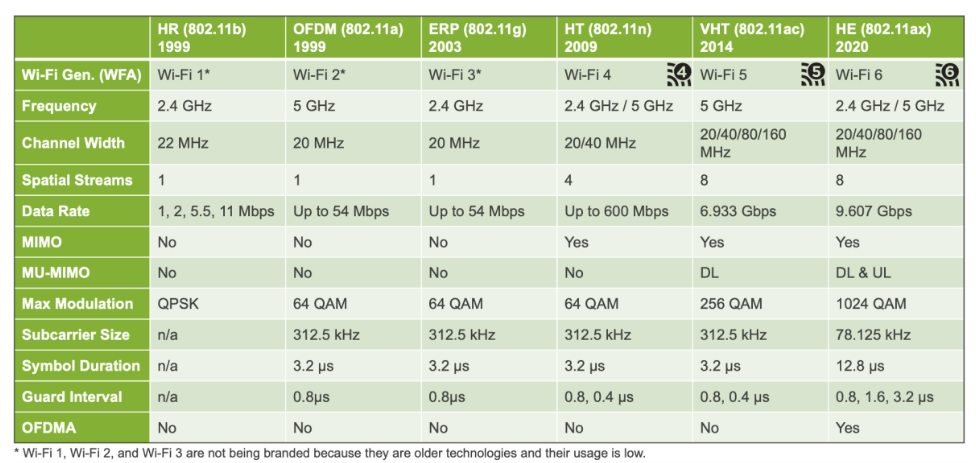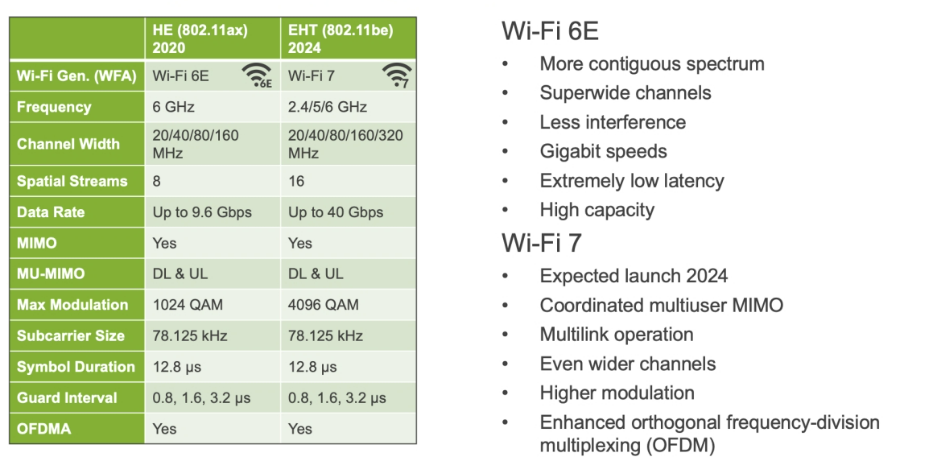EMAIL SUPPORT
dclessons@dclessons.comLOCATION
US802.11 - 2020 Standard
Notice the Wireless LAN Medium Access Control (MAC) and Physical Layer specifications. Recall that, for each physical transmission medium, there must be a matching MAC sublayer to interface with. Hence, the 802.11 standard is defined in the Physical Layer and the MAC sublayer.
802.11 Physical Layers, Part 1
This table summarizes the different PHY layer specifications defined in the 802.11 standard.

First published in 1997 (not shown), the IEEE 802.11 standard has been through several amendments, each of which has an incrementing letter designation. Besides the IEEE designations, beginning in 2018, the Wi-Fi Alliance began using consumer-friendly number designations aligning to the generation, making it easier to distinguish the newer standard.
Some important features:
- Frequency — The radio frequency band specified for use. Note that some standards have multiple frequency bands available for use.
- Channel width — The width of each channel for the frequency band. Additional details will follow in later content. Data rate — The maximum theoretical data rate specified in the standard.
Introduced by Wi-Fi Alliance in April 2020, Wi-Fi 6E is the upcoming standard for an extension of Wi-Fi 6 (802.11ax), enabling the operation of features in the unlicensed 6-GHz band and the 2.4-GHz and 5-GHz bands. This expansion is the largest spectrum addition since 1989.

With an additional 1200 MHz of spectrum available (regulatory restrictions may limit the available spectrum—at the time of this writing all 1200 MHz is available in the United States, but only 500 MHz is approved in the European Union) for the 6-GHz band for Wi-Fi, Wi-Fi 6E devices operate in 14 additional 80-MHz channels and 7 additional 160-MHz channels. This broader spectrum simplifies network design and delivers increased Wi-Fi performance with higher throughput and wider channels. This results in eliminating the need to support legacy devices, resulting in less network congestion and interference.





LEAVE A COMMENT
Please login here to comment.